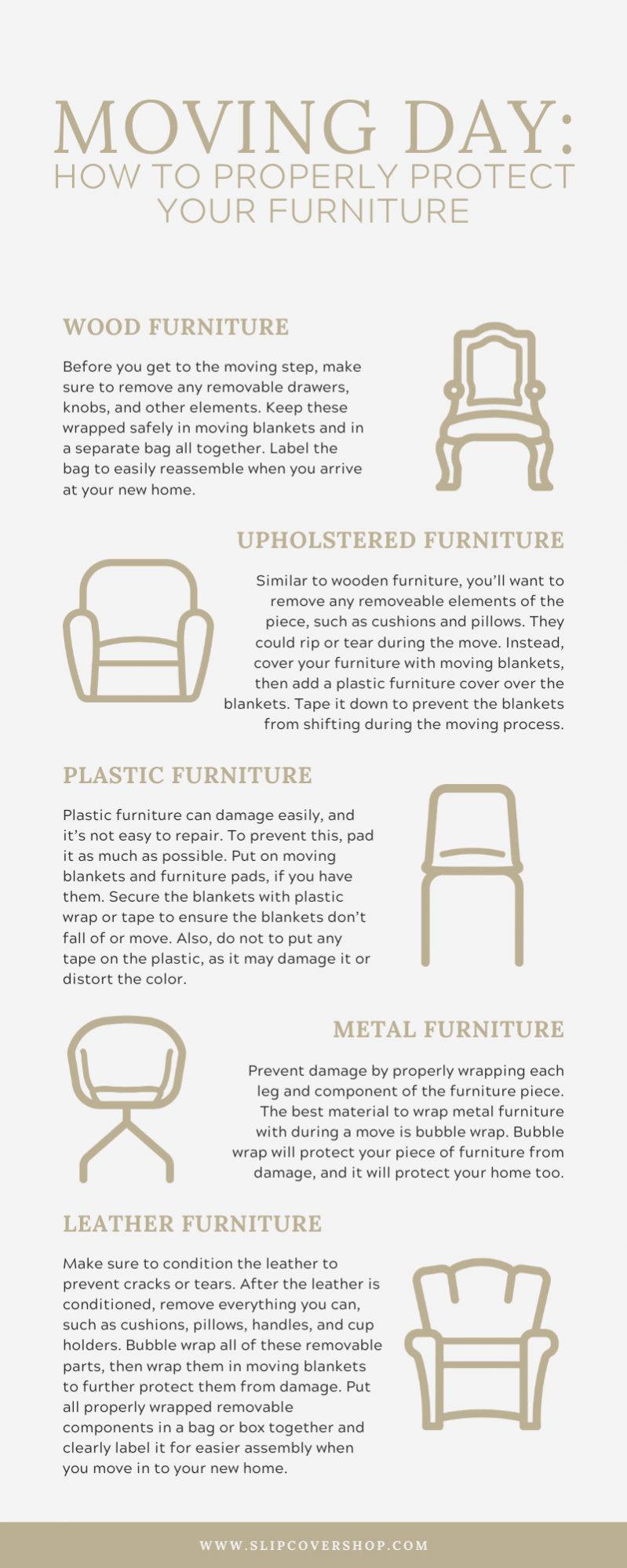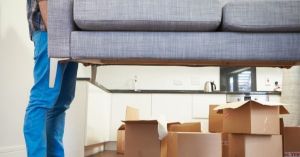Moving often causes stress. It’s not just moving day that fills you with work and tasks, but the days and weeks leading up to it also include preparation. You have to decide what you’ll move, donate, and throw away, and you’ll need to organize and pack everything you’ll take with you, prepare your furniture, decide how to pack it into the moving truck. This is a lot for a person to handle, even if you hire professional movers to help. It’s especially difficult to decipher what furniture needs to be packed in which way to avoid damage throughout the move. It’s important to properly wrap your furniture to protect it from the many dangers it will face throughout the moving process, such as tears, rips, dents, and broken elements. We provide this guide to moving day and how to protect your furniture so that you can enjoy a successful and easy move.
Wood furniture
When moving solid wood furniture, you need to keep a lot of considerations in mind. Wooden furniture is typically quite heavy, and it usually requires multiple people to lift and move it properly and safely. Before you get to the moving step, make sure to remove any removable drawers, knobs, and other elements. Keep these wrapped safely in moving blankets and in a separate bag all together. Label the bag to easily reassemble when you arrive at your new home. Once you secure your loose pieces, you should wrap your wooden furniture with moving blankets. Make sure every part of the furniture is covered to avoid scratches and damage to the furniture and flooring. Pro Tip: Make sure not to use bubble wrap or plastic wrap directly on the wood furniture, as they can both cause permanent damage to the wood surface. Use softer materials like packing pads and moving blankets.
Upholstered furniture
Moving upholstered furniture has a few steps. Similar to wooden furniture, you’ll want to remove any removeable elements of the piece, such as cushions and pillows. If you use custom slipcovers, you’ll want to remove them as well. They could rip or tear during the move. Instead, cover your furniture with moving blankets, then add a plastic furniture cover over the blankets. Tape it down to prevent the blankets from shifting during the moving process. If possible, you should avoid putting plastic materials directly onto the furniture, as it can suffocate and damage the upholstered fibers. Make sure to put a buffer layer in between your furniture and the plastic furniture cover. This cover is simply to protect from dirt and the elements, not to protect your furniture from damage. Pro Tip: Measure all your doorways and furniture pieces before picking them up to move them. This can save your door frames, save you time, and save you a headache. Also, don’t move anything too heavy without proper help. Doing this risks back and leg strain, and it can lead to injuries and damage.
Plastic furniture
Moving blankets are key to properly moving your plastic furniture. Plastic furniture can damage easily, and it’s not easy to repair. To prevent this, pad it as much as possible. Put on moving blankets and furniture pads, if you have them. Secure the blankets with plastic wrap or tape to ensure the blankets don’t fall of or move. Also, do not to put any tape on the plastic, as it may damage it or distort the color. Plastic furniture is typically lighter weight than most furniture materials. Pack with intention in the moving truck, and make sure not to stack heavy objects or too many items on top of your plastic furniture. Pro Tip: Pad any sharp edges with bubble wrap and furniture pads to avoid accidental injuries or damage to walls, floors, door frames, and other items you move in the same truck.
Metal furniture
Metal furniture, while sturdier, is more prone to dents, and it can easily damage floors, walls, and door frames in your old and your new home. Prevent damage by properly wrapping each leg and component of the furniture piece. The best material to wrap metal furniture with during a move is bubble wrap. Bubble wrap will protect your piece of furniture from damage, and it will protect your home too. Use a dolly to avoid scratching the floors. Even if it’s a small piece of furniture and you don’t think you’ll need to put it down during the move, it’s safer to opt for a dolly anyway. Metal furniture can do a lot of damage to wooden and tile flooring when moved improperly or dropped during a difficult move. Pro Tip: Secure the bubble wrap with tape. Make sure not to tape the metal—only tape bubble wrap to itself. It’s also important to tightly wrap the bubble wrap around the piece of furniture to ensure it won’t move.
Leather furniture
When moving leather furniture, you’ll need to follow special procedures to preserve the leather and to ensure the leather doesn’t sustain any damage. Make sure to condition the leather to prevent cracks or tears. You can condition your leather with a leather conditioner, and you’ll find one available at most furniture shops or online. Conditioning the leather takes time, so leave yourself at least a week prior to moving to complete this task. After the leather is conditioned, remove everything you can, such as cushions, pillows, handles, and cup holders. Bubble wrap all of these removable parts, then wrap them in moving blankets to further protect them from damage. Put all properly wrapped removable components in a bag or box together and clearly label it for easier assembly when you move in to your new home. After you pack up all removeable components, wrap what’s left of your leather furniture piece in moving blankets. Then secure the blankets with a layer of bubble wrap. Add tape to the bubble wrap to ensure it and the moving blankets all stay in place and intact. Pro Tip: If you will store your leather furniture prior to the move, make sure to keep it in only temperature-controlled spaces. Leather is a more high-maintenance material than most, and you should handle it with care. It requires a cool and dry environment, so a storage facility with those qualifications is a must. 

